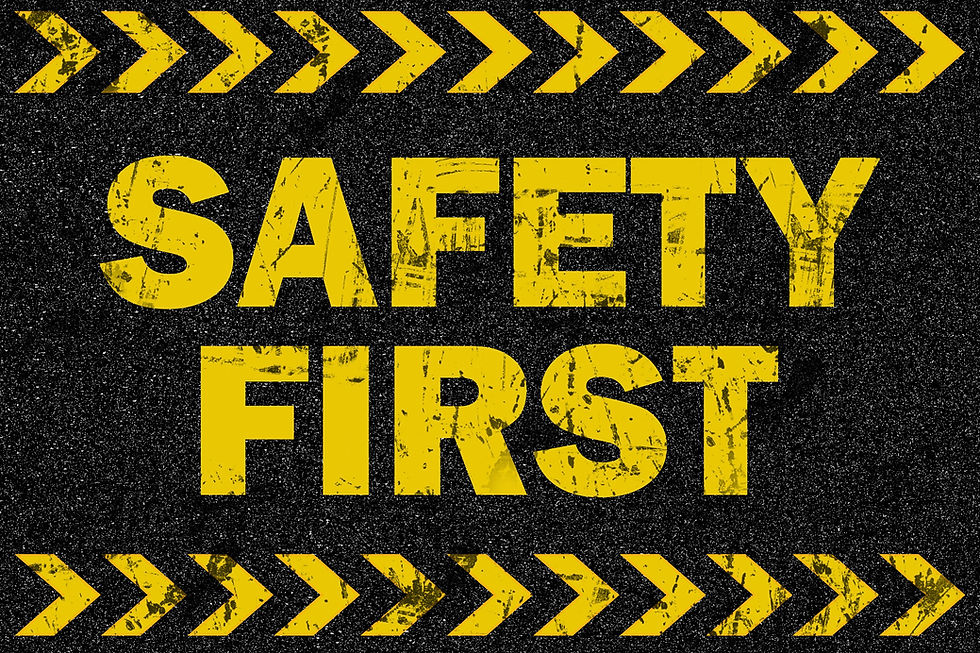Just Like Riding a Bike
- Tim Close

- Nov 16, 2021
- 3 min read
Running a Safety Program - Just Like Riding a Bicycle
By Tim Close, Captain U.S. Coast Guard (retired)
Senior Consultant, Independent Maritime Consulting LLC
At about mile 5 the other day, a thought crossed my mind that, at its simplest, managing a safety program is a bit like riding a bicycle. That is especially the case if you have a mindset of continuous improvement.
Riding a bicycle is a very individualized endeavor. Sure you can ride with a group or as part of a team, but at its essence, it’s you and your machine. This analogy breaks down a little since managing a safety program usually involves a whole team. However, if you are the safety manager, you have to lead the group and the effort. You have to build support. You have to keep it going. You have to steer the team. They are the bicycle that you are driving and it doesn’t go far without you.
With that as a basis, here are a few insights and recommendations (with my apologies to any serious cyclists out there).
1. Have some idea where you are going;
2. Tail winds are fleeting so expect and plan for head winds;
3. Get out of the pack;
4. Keep your machine in good working order and well oiled;
5. Keep your balance;
6. The machine is designed to go forward, so don’t look backwards;
7. Avoid obstacles in the road;
8. Just keep pedaling.
First, know where you are going. Whether it is a set of safety goals, or a set of improved measures, work toward a tangible destination.
Secondly, it’s unrealistic to expect easy going. On my bike, I seem reap the benefit of tailwinds a whole lot less than I fight a headwind. It’s the same when running a safety program. There will be organizational challenges, cultural challenges, time constraints, budget constraints, etc. They are the headwinds, so expect them and plan for them.
Here’s a trickier one. Get out of the pack. Quit drafting behind others. It might be less work behind someone else (just like drafting behind another rider can substantially reduce wind resistance) but the person you are following may not be going where you need to go. Whether you are still following the path of the person you replaced, or following the lead of another safety professional, at some point you need to move to the front and take on the headwinds yourself.
A bicycle works best when maintained and properly lubricated. Similarly, keep your safety program in good shape. Pay attention to your metrics, especially the leading indicators. Pay attention to whether required training is getting done. Maintain a good working relationship with the operations managers. You are not their adversary and they will better realize that when they see you working with them.
Maintaining balance is important for obvious reasons on a bicycle. With your safety program, you need to balance your time and your efforts between training, accident investigations, tracking metrics, walking around to ensure compliance, professional development, etc. Work to avoid spending a disproportionate amount of time on any one aspect at the expense of other responsibilities.
A bicycle is designed and made to move forward. Most cannot be pedaled backwards even if you wanted to. Therefore, keep your focus forward. Don’t look backwards. Even when investigating accidents, keep looking forward by identifying how a similar accident can be prevented from happening.
Don’t hit the bumps on the road. Steer around them. For example, a new evolution or new task or new piece of equipment can represent an increased risk of something bad happening. The workforce may be unfamiliar with the equipment or the task at hand. They may not recognize different hazards that might exist. Avoid those bumps in the road by conducting a simple risk analysis. Ensure that training is conducted, or some experience with the equipment is gained under supervision. Discuss potential hazards, especially with a new evolution and involve the workforce in that discussion. It will take some time and effort, but it beats the time lost responding to an injury and conducting the investigation, etc.
And lastly, just keep pedaling. Regardless of the successes or setbacks on a daily basis, perseverance and consistency will pay off. Keep your feet on the pedals; keep pumping your legs; and keep the machine moving forward.




Comments